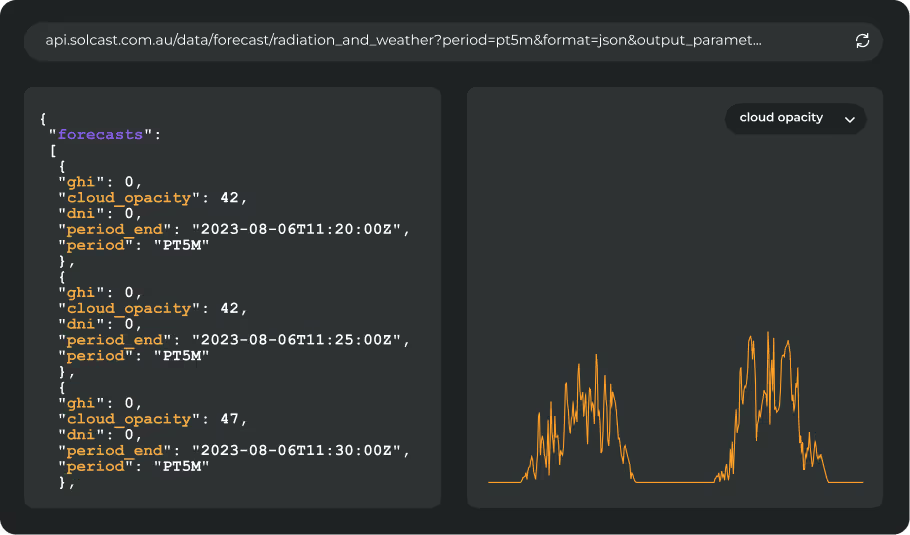Solar generation across Europe has been impacted up to 20% this week, as Saharan dust has been carried through the atmosphere. Dust clouds like this, relatively common, can reduce clear sky irradiance—and therefore solar generation—by up to 20%, though fortunately only last a few days. This week’s dust cloud is set to clear by Saturday, with areas further north and mountainous regions protected by the Alps seeing a reduced impact.

A low-pressure system over the Mediterranean led to a significant dust transport event, affecting solar generation across Europe throughout the week. Weak low pressure in the Mediterranean set up southerly winds from Saharan Africa across the Mediterranean into Europe, drawing dust into Italy and southern France. High-pressure ridging from the Atlantic introduced westerly winds, pushing the dust around the north of the Alps into southern Germany. By Saturday, the dust will be much less intense, diluted by mixing with the upper layers of the atmosphere and dispersing.


As the dust travelled northwards, its intensity and the resultant impact on irradiance diminished. On Wednesday, June 19, Italy, particularly Rome, and southern France, including Marseilles, experienced significant impacts. By Thursday, June 20, the dust affected southern Germany, notably Frankfurt and Munich, with Switzerland largely shielded by the Alps. By Friday, June 21, the dust had cleared from southern France but impacted Berlin. By Saturday, June 22, it was much diluted and had moved further east.
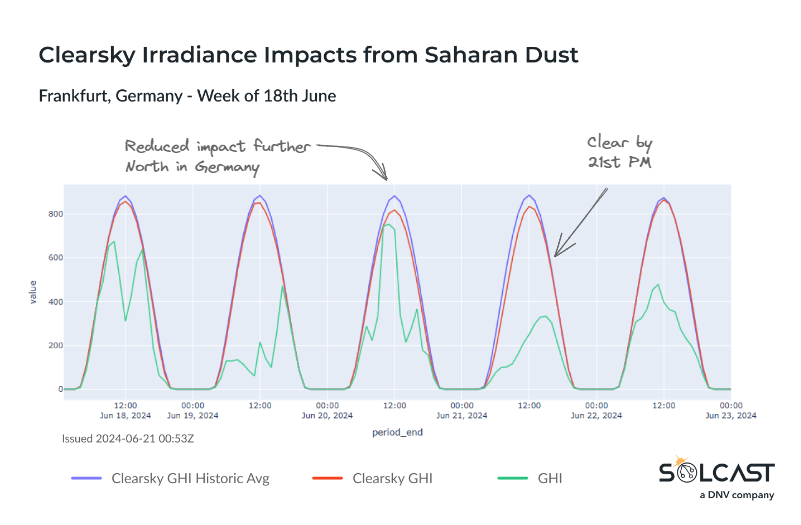
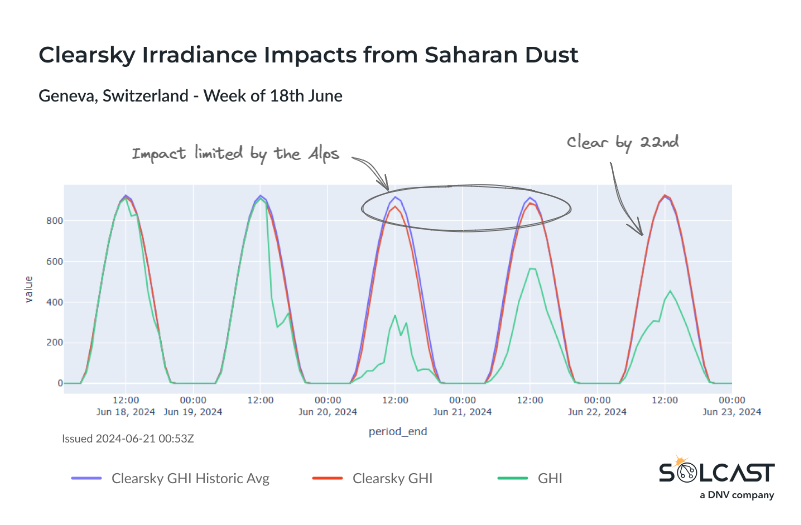
The impact on clear sky irradiance was notable, with Marseilles experiencing more than a 20% reduction compared to average clear sky Global Horizontal Irradiance (GHI). Saharan dust transport events across the Mediterranean are not uncommon in the Summer, as the Azores High migrates northwards, allowing more low pressure systems to develop in the Mediterranean. This is why Italy, which extends into the Mediterranean, is typically more exposed to such dust transports.
How Solcast models aerosols for irradiance and PV power data
While dust events are not frequent, they typically occur over short durations with significant impacts. Earlier this year, Europe experienced a Saharan dust event, and its progression and impacts were monitored via the Solcast API. You can see our analysis here. Unlike climatological historic data or general weather forecasts, aerosol events (like dust, pollution, smoke, ash, etc.) are well-handled in all Solcast historical, real-time, and forecast irradiance and PV power data using high-quality input data from Copernicus ECMWF and NASA - National Aeronautics and Space Administration, downscaled to 90m resolution using Solcast algorithms. Learn more about Solcast's aerosol handling here.Start evaluating our data via the Solcast API toolkit, or reach out to our team to learn more.








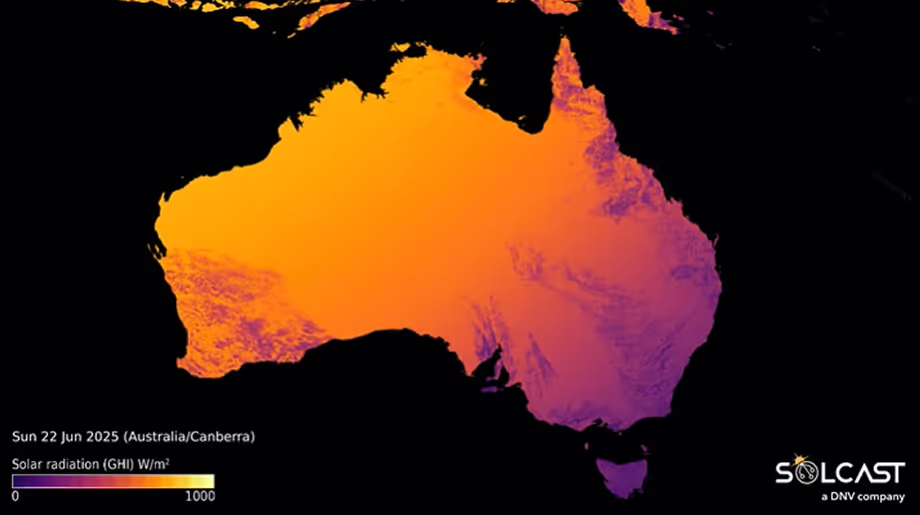
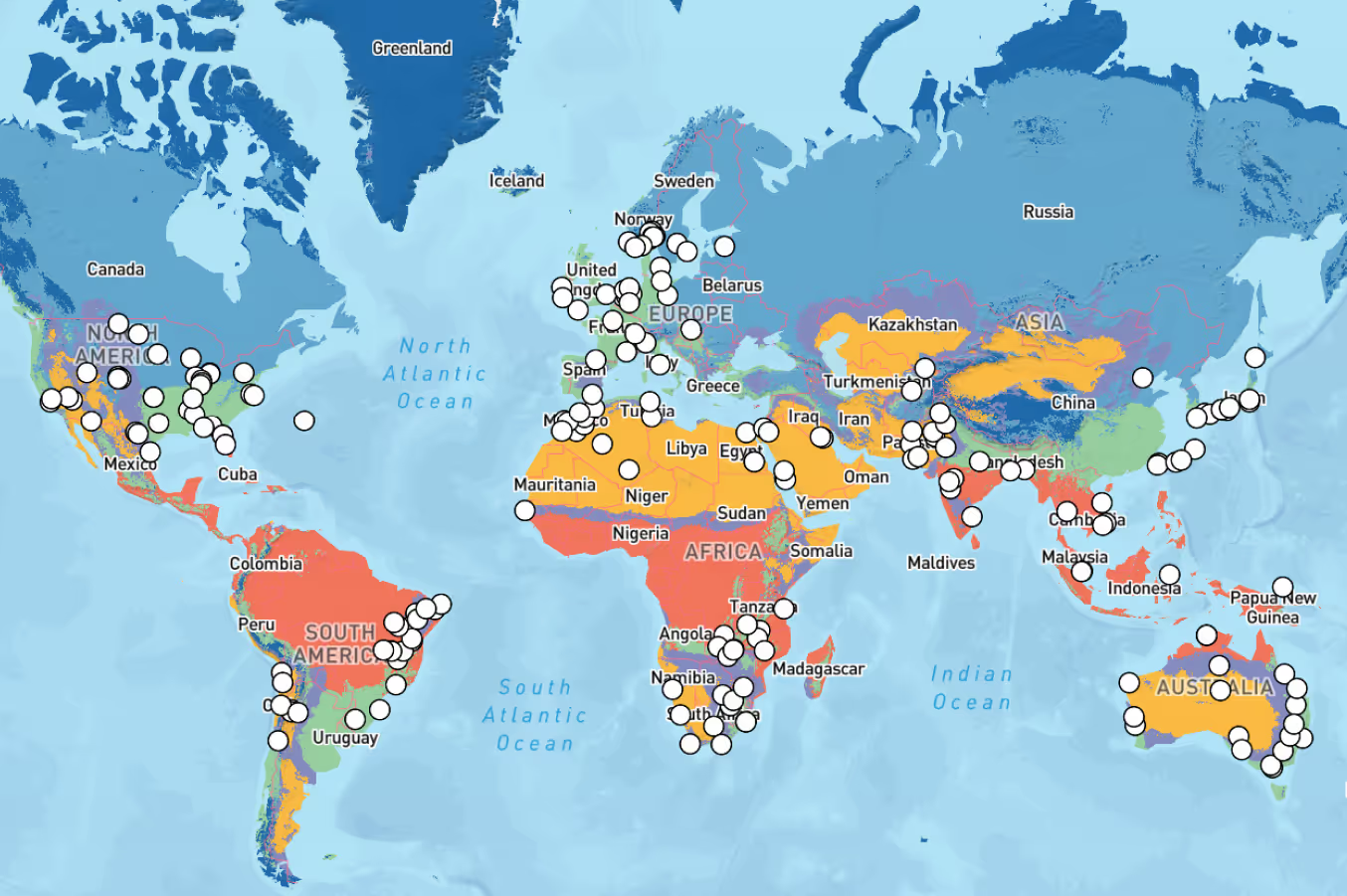
.avif)
